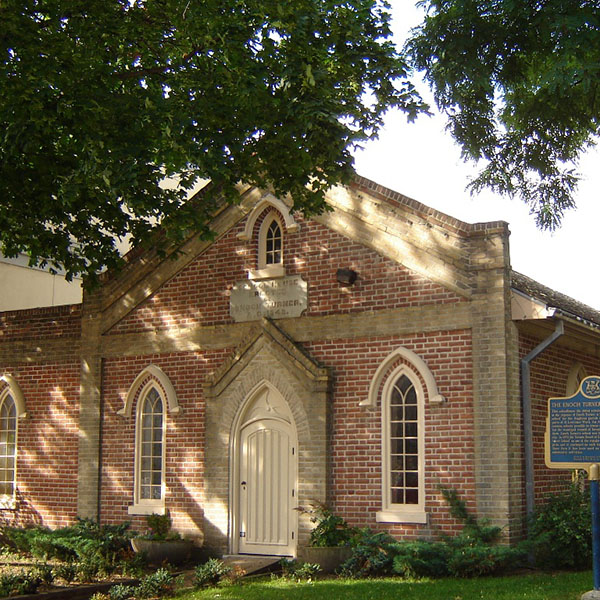Menu
Fulford Place is now closed for the season.
Gardens
Restoration of the Fulford gardens was one of the Trust's most exciting heritage garden conservancy projects. The restoration included the Italianate-style gardens, an elaborate triton fountain, statuary, stone walls and gates. Through generous donations from a number of individuals and organizations, the Trust restored the Italianate garden, a key component of this nationally significant historic landscape.
The Olmsteds (prominent American landscape architects) were renowned for their brilliant landscape projects – which include Central Park in New York City, Mount Royal Park in Montreal, the grounds of the U.S. Capitol and White House in Washington, D.C., university campuses, including the Harvard Business School and Johns Hopkins, the gardens of vast country seats such as Biltmore in Ashville, North Carolina, major park systems across North America, and numerous private gardens throughout Ontario. The Olmsteds were considered the leading landscape architects of 19th-century America.
Senator George Fulford hired architect Albert Fuller of Albany, New York to design an eclectic Beaux-Arts mansion in Brockville. The Olmsted Brothers were responsible for the extensive grounds, which descended to the St. Lawrence River. Designed in 1899, the formal garden west of the house was Italianate in style. Typical of the Olmsted approach, formal designs were artfully integrated into the splendid natural setting, incorporating natural features such as mature trees and rock outcroppings.
The outlines of the geometric planting beds were still visible, although the garden had not been cultivated in many years. The focal point of the bedding garden was an elaborate white marble fountain, featuring bronze mythological sea creatures. The Italianate quality of the garden's original design was enhanced by a variety of carved stone figures – statues of Adam and Eve, a pair of crouching lions guarding the west veranda staircase of the house, a carved marble bench and both large and small stone urns.
The house with its generous verandas was well positioned on the uppermost terrace among mature trees, lawns and a parterre, the Italianate garden with statuary, an arbour and formal geometric flower beds anchored by a central fountain. The lower terraces were treated as a picturesque composition of trees, shrubs and rock gardens, with large natural rock outcroppings. A boathouse, log cabin and gazebo completed the design. The design considered both the vistas from the house and the view of the property from the river.
Extensive research and documentation was assembled from the Olmsted archives in Massachusetts. The documents included historic photos, correspondence and detailed planting plans. A consultant landscape architect completed drawings and specifications for the horticultural restoration work. The statuary and the central marble and bronze fountain were restored, along with construction related to site services, water and electrical power for the fountain. Pathway restoration and planting of the geometric beds were completed in the Spring of 2004.
The historical significance of the Olmsted landscape and garden was identified when Fulford Place was designated a National Historic Site in 1992. Until recently, this rare and significant landscape was unknown to most Ontarians.


